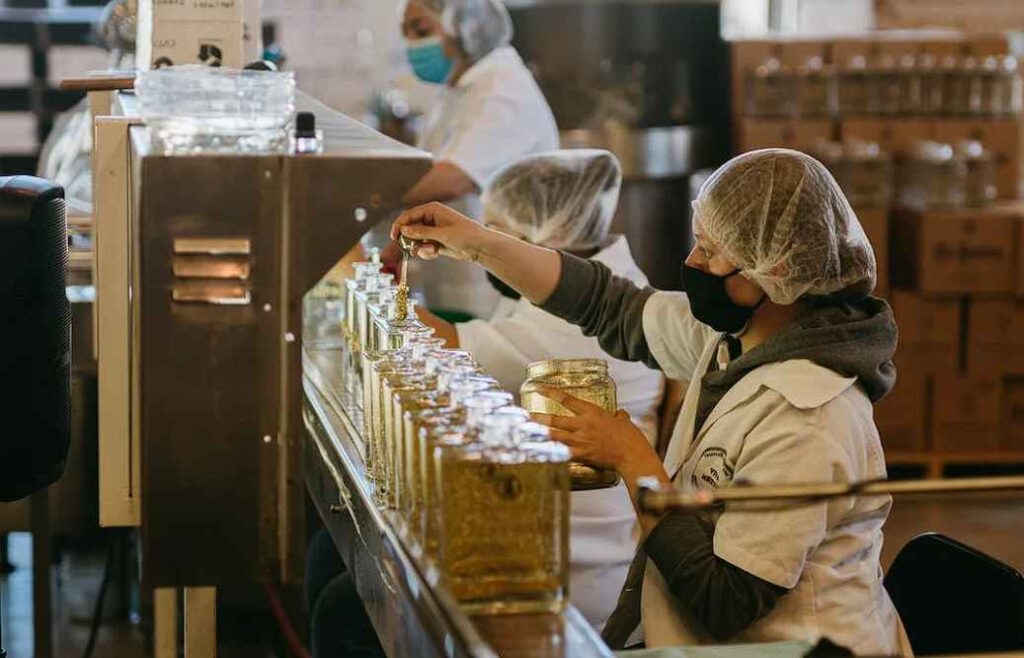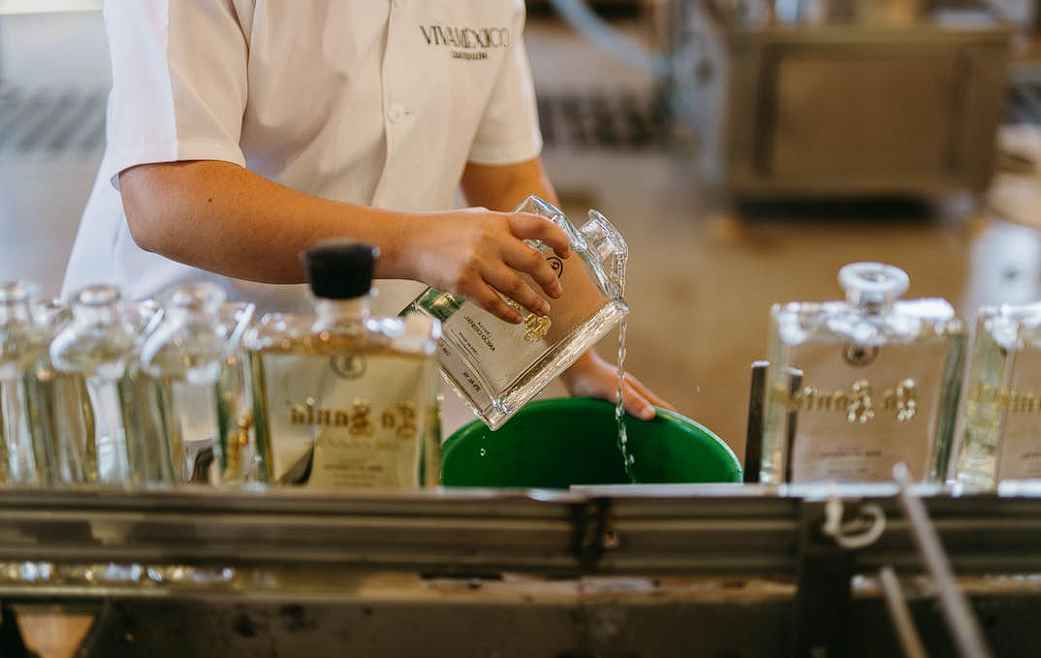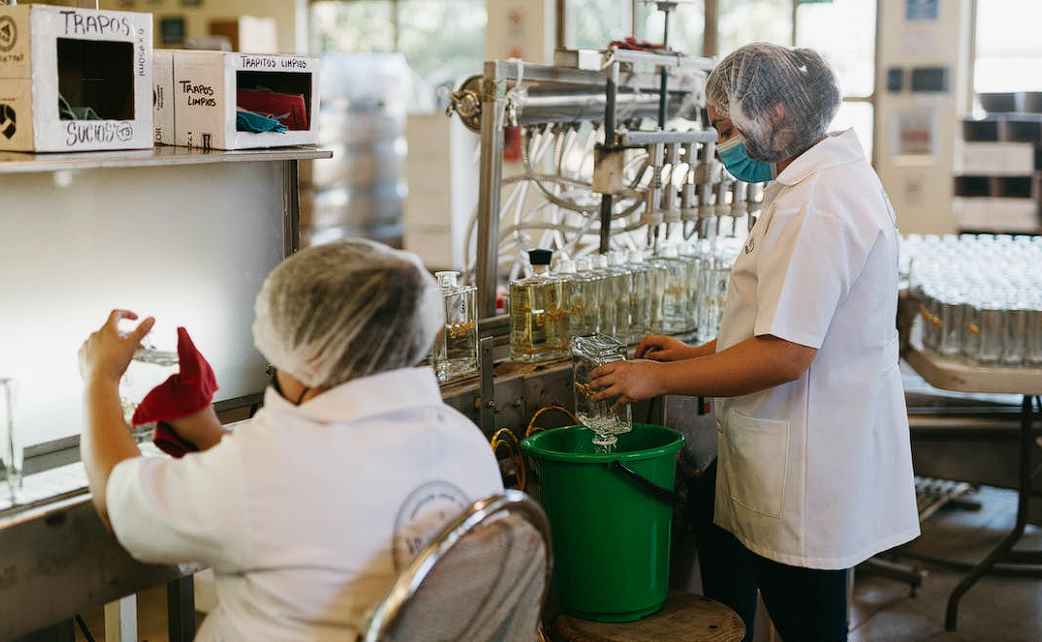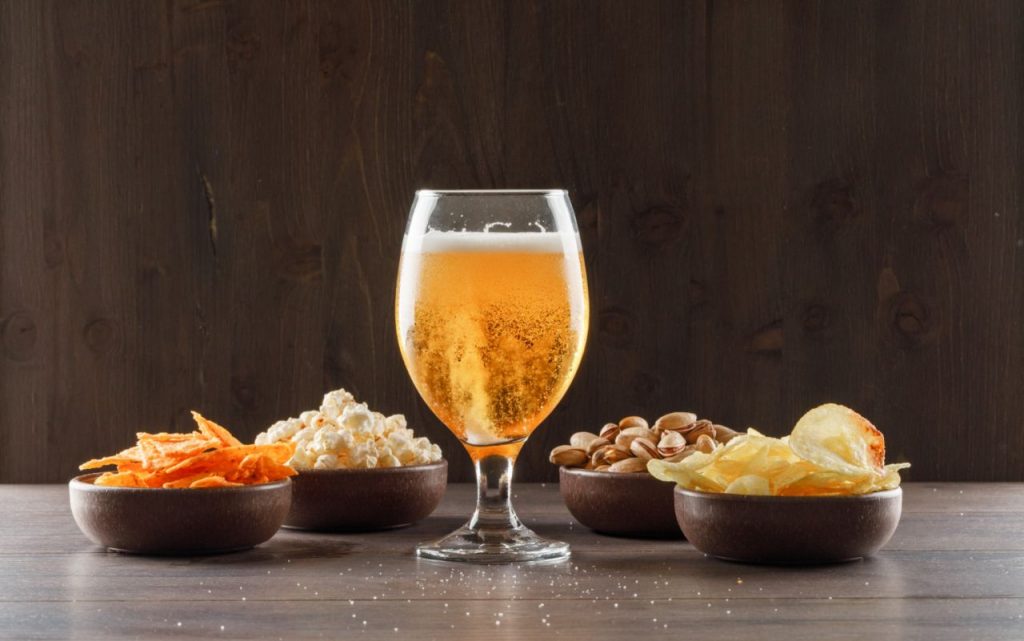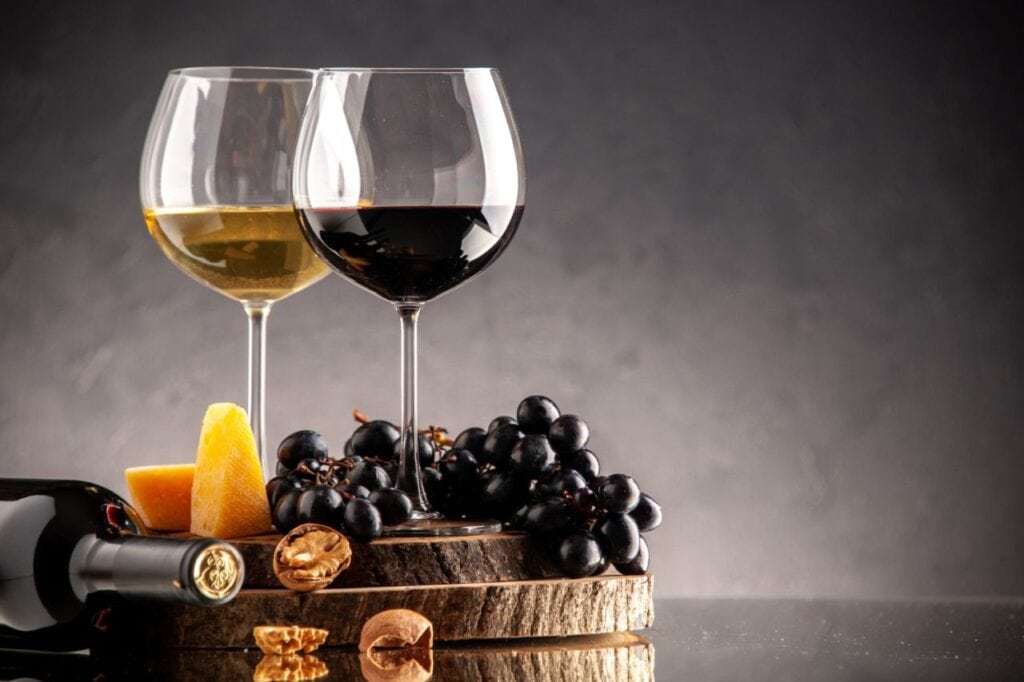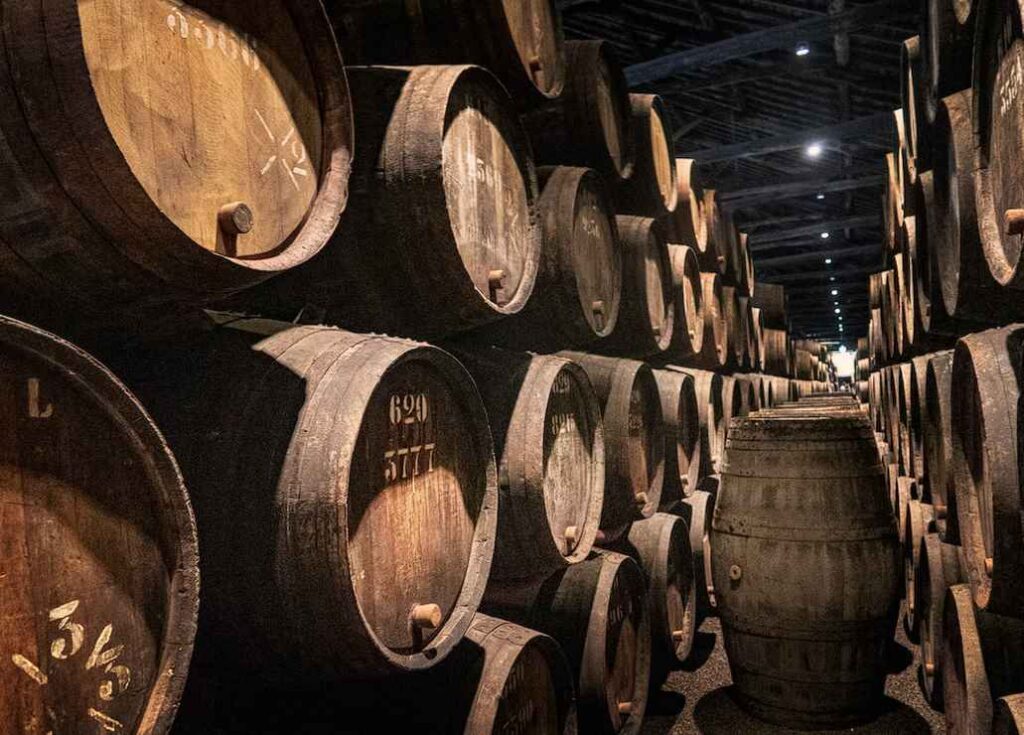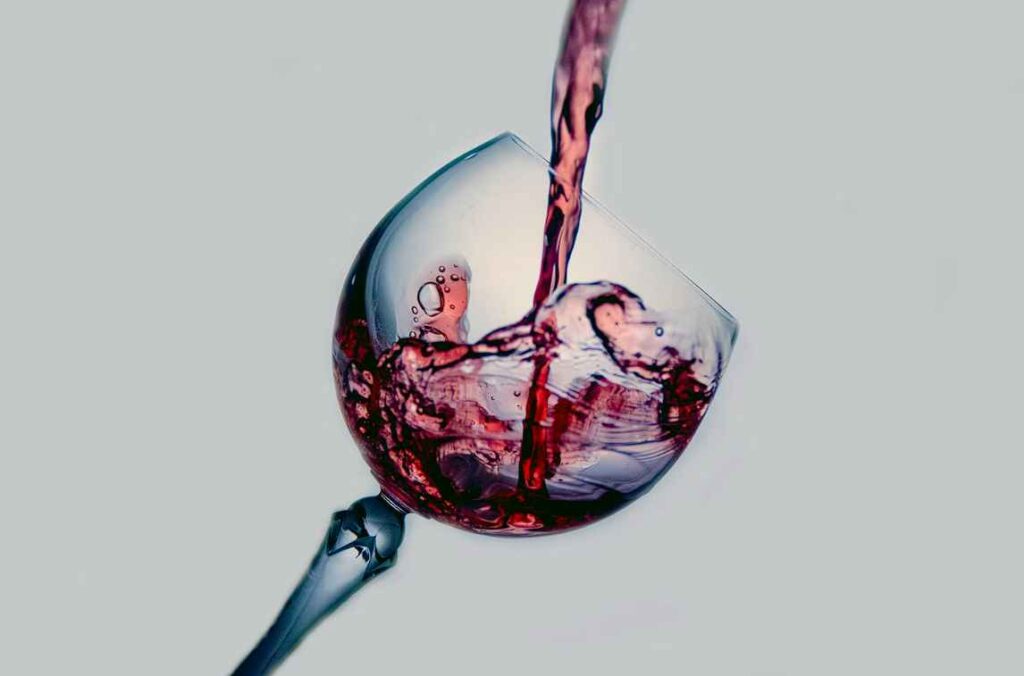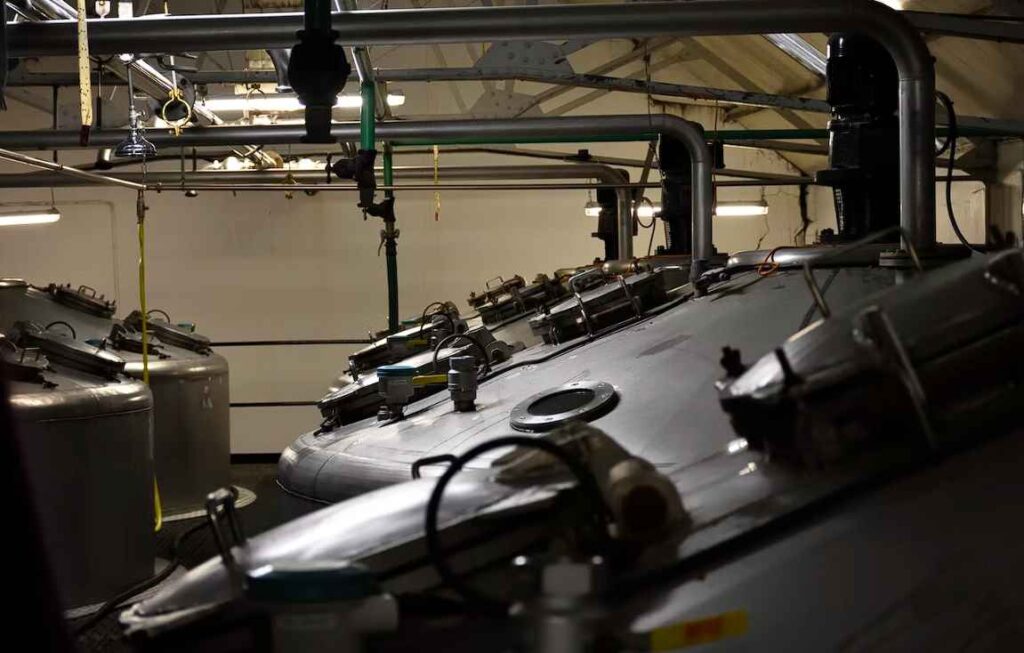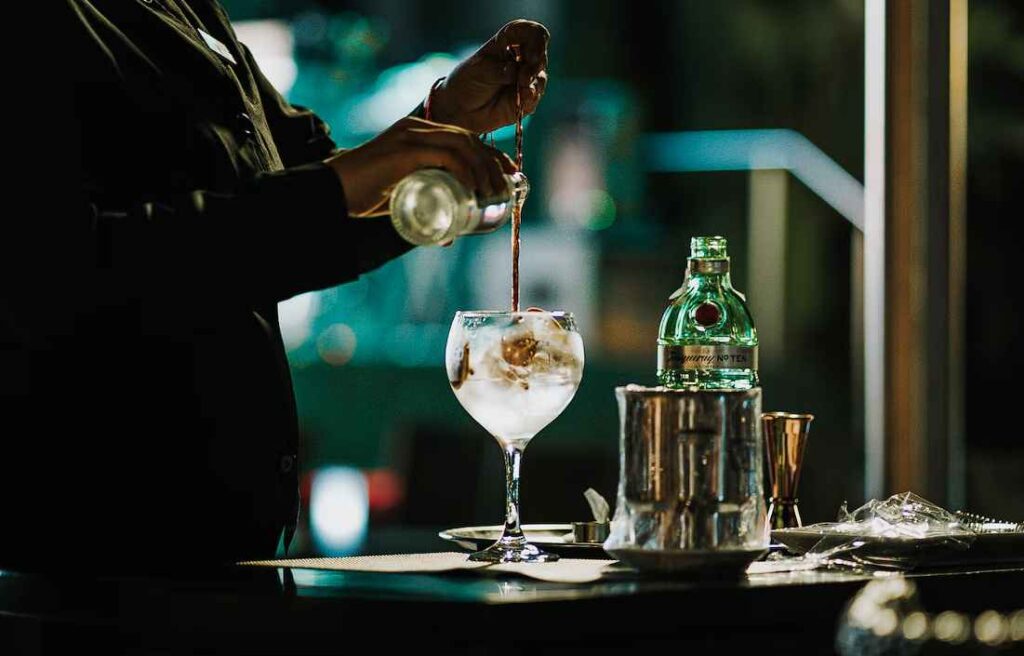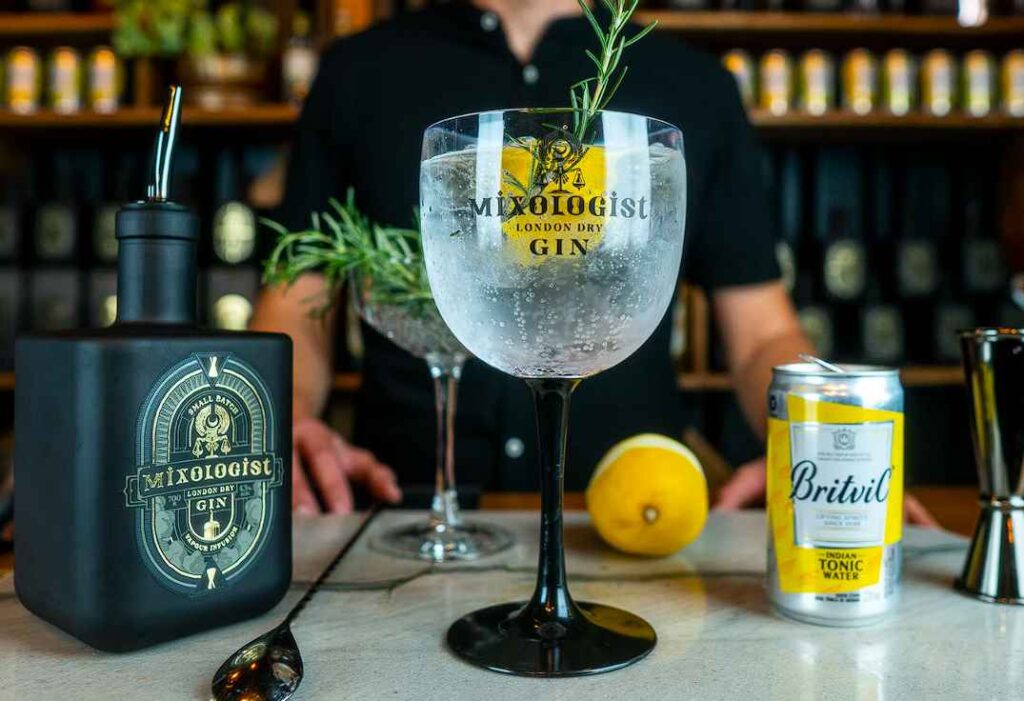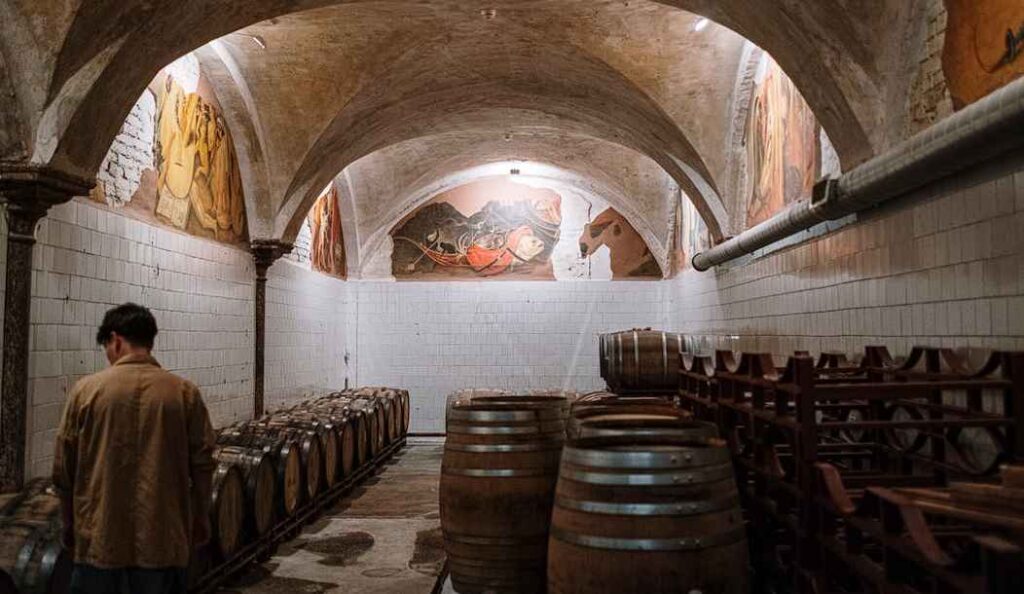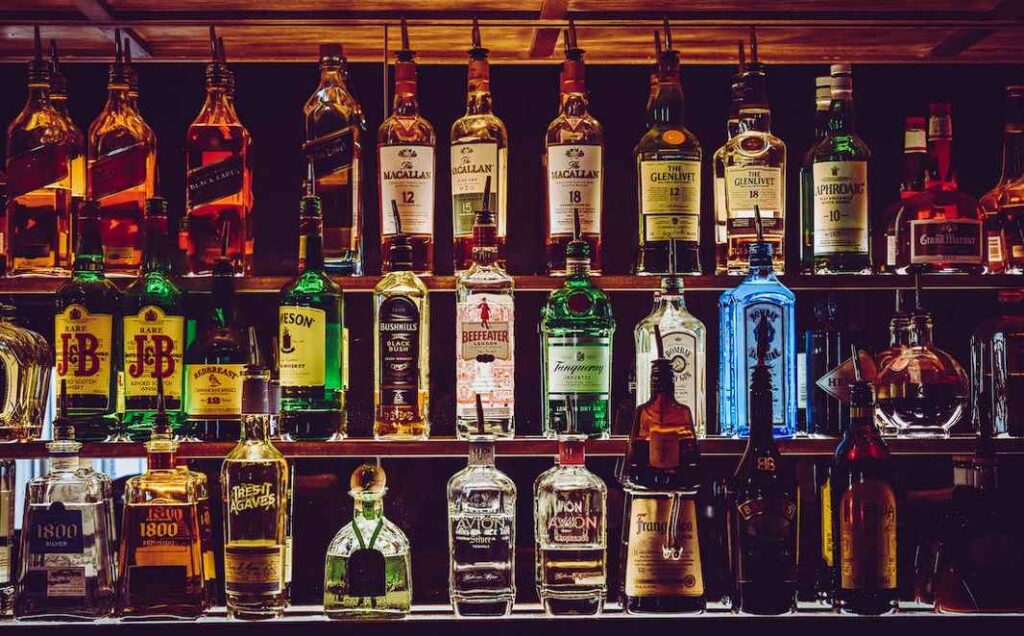If you're interested in starting a distillery, then you know the importance of choosing the right still. Choosing the wrong equipment could cost you time and money – not to mention that it won't be as effective or efficient. To ensure success and satisfaction with your product, it's essential to choose correctly from the start.
That's why we've put together this ultimate guide on selecting the best still for your distillery needs. From understanding what type of material is suitable for producing spirits to learning about custom options available for large-scale operations, by following our advice, you'll have all the information required to make an informed decision. So read on and let us help you find exactly what works best for your unique goals!
Let's get started!
Are you looking for the perfect drink? From the Mornington Peninsula Brewery, Tar Barrel breweries and distilleries are producing some of Australia’s most outstanding craft beers, ciders and spirits.
The Australian Drinks Scene
For a very long period of time, the majority of people have thought of Australia as a region of the globe that is severely hooked up and drunk on lager, prioritising volume above value and doing so in a way that is frequently extremely ridiculous.
To our great relief, the times are fast shifting. Particularly in cities.
The culture surrounding coffee and food has been instrumental in bringing about a significant shift in perspective regarding beverages in general. As a result, there has been a rise in the popularity of craft cocktails, alcohol and food combinations, and the city is now home to several of the most prestigious bars and inventive spirit businesses on the planet. It's a complete about-face in fewer than ten years, and this change makes it a nation that aficionados of spirits will want to visit and learn more about.
The fact is, the artisan distilling industry has been going strong over there for quite some time now. In point of fact, it might even be older than the boom in the UK. It all started in Tasmania over thirty years ago with the Lark Distillery. Still, other than these pioneering brands who paved the path for the establishment of micro-sized distilleries, there was no immediate explosion in the industry.
After a few years had passed, there were two factors that began the sudden acceleration that led to what we observe nowadays. First, gin production had increased dramatically all over the planet, and the United States witnessed the growth of thousands of small distilleries. On the other hand, some domestic distilleries, such as Sullivans Cove in Tasmania, were awarded the world's greatest whisky title.
The widespread acclaim received by their breathtaking whiskies was the impetus for a mental shift not only in their home country but also globally. Folk's eyes were opened, and several came to the realisation that Australia was capable of producing some fairly great drinks as a result. The idea started in earnest when gin producers like Four Pillars and others demonstrated that not only were able they produce appealing spirits, but they were also able to build appealing identities.
Throughout 300 distilleries may be found all over the United States, the majority of them are younger than five years old. For consumers, this has brought a vast set to explore (and an overall growing quality), but what is really especially fantastic is that no matter where you are in the nation you are, you'll constantly locate a distillery with an open door. But, again, this is because there are so many distilleries across the country.
Gin is still the most talked about spirit, but whisky and brandy are making rapid progress, and the amount of mature stock available is growing each month. Along with it, demand is also quickly increasing. Compared to places like the UK, a significant number of manufacturers already are pan-spirit producers, which speaks positively for the company's ability to continue to thrive in the future.
The number of people taking part in the competition is anticipated to grow once again now that tax breaks have been established for makers of micro-spirits. As a result, we anticipate a significant increase in the number of nano-batches produced by wineries as they attempt to capitalise on the tax change and broaden the range of products they provide to customers who visit their cellar door (and no doubt further expanding the grape meets wine genre as they go along – be it Shiraz Gins or other).
The distilleries of Australia really aren't ones to step back from the apparently irrational either, and they have a way of transforming concepts that at first seem like frivolous concepts into concepts that are entirely reasonable when delivered in a glass.
The rebirth of craft limoncello is one example, while wine-infused gin is another. However, the Australian agave crop is one of the most grandiose undertakings in international alcohol manufacturing anyplace on the planet. Nobody can predict how the Australian form of tequila will end out, but the odds are that it will be fairly good, and in time, it will probably be followed by others...
It is currently an ideal period to get involved in the Australian distilling sector and observe it for yourself because the industry is thriving and constantly changing.
How to Determine Which Type of Still Is Best for Your Distilleries: Continuous Column Still vs. Batch Pot Still
You are going to learn a list which will assist you in preparing for your first talk with the person who will be building your still. Additionally, this list will put you on a road that will assist you in generating spirits both now and in the foreseeable future.
Selecting the appropriate still is not a simple endeavour. The wrong choice of still can result in significant financial loss. Making a decision between a column still and a pot still is just the start of the procedure. When discussing these two methods, it is preferable to refer to them by their complete names. For example, rather than choose between a column still and a pot still, you should consider whether you would prefer a batch pot still system or a continuous column still system.
We had a discussion with a still maker who was in his fourth generation to learn the ins and outs of the process of selecting the best still for a distillery. Since the beginning of recorded history, stills have been constructed at the same place, which is now recognised as one of the most prestigious distillation equipment manufacturers in the entire world. Stills, fermentation tanks, mash tuns, beer wells, alcohol safes, and other equipment made by them can be found in craft alcohol distilleries of all sizes, from small startups to major heritage operations.
The aesthetics and feel of their gear range from simple and functional to elaborate and detailed, like the 420-piece Walker Woodfill spirit. They not only construct and instal all of their systems, but they have also been providing maintenance for them for the same number of years. And if you're the kind of artisan distiller who likes to do things on your own, they'll send off your new still, and you'll be the one responsible for setting it up.
When Considering What Still to Purchase for Your Distillery, Here Are Some Points You Should Address
The starting point for each individual is unique. Several individuals are transitioning from brewing to distilling, which will provide them with a strong foundation. In addition, many of them will have prior experience working in another distillery and will be eager to launch their own enterprise in the industry.
Others are simply starting their distillery venture off the ground and will want assistance with every stage of the process along the road. This is just a broad sequence, but each of these issues is vitally important to decision-making. Let's get going.
- Which kinds of distilled spirits do you intend to produce? Whiskey, moonshine, bourbon, gin, vodka, brandy, absinthe, and other types of distilled spirits.
- What quantity of each beverage do you plan to produce? The number of proof gallons or barrels consumed on a daily, weekly, monthly, or annual basis.
- What are you making right now, whisky or beer?
- Is this the first distillery that you've owned?
- How much of your time do you intend to put in? Consider the processes of operations and production. The solution to this conundrum is not as straightforward as it would first appear to you. The following are some points to think about.
- To what extent you'll be distilling each day of the week?
- What number of shifts do you need, one, two, or three?
- How many hours does each session last?
- One hundred thousand proof gallons in a single shift over the course of a year?
- One hundred thousand proof gallons per year over four distinct goods.
- Are you going to be distilling whisky or bourbon?
- How many gallons do you produce each day?
- A 1,000 Gallon pot still can make nearly 2 barrels per day, whilst a continuous still operating 1,000 gallons of beer will generate 2.3 barrels each day. Based on the ABV of beer.
- Take into account using a continuous column still as opposed to a batch pot still if you produce more than two barrels each day.
- Go with a batch pot still if your daily production is between one and two barrels.
- If your daily output is greater than 2 barrels, you should seriously consider switching to a continuous column still.
- When you perform the process, will it be a Sweet Mash or a Sour Mash?
- Where would you keep your containers once they are full? You might be shocked by how rapidly a barrel store, rickhouse, or rackhouse can become full of goods, regardless of the name you give it. In roughly how many months do you anticipate completely filling up your barrel storage capacity? Also, keep in mind that containers can get quite heavy, especially if you're on the 2nd floor. Each individual 53-gallon barrel will weigh in excess of 500 pounds.
- Have you decided on a location?
- Do you own the land and the structure that you're using, or are you renting it?
- If you are considering a move in the near future, you might incur significant initial fees.
- Which do you anticipate using this space for, the long or the short term?
- Will you continue manufacturing even if you relocate to a different location?
- Are you prepared to relocate the skid system? Think about a portable system that is erected on a skid, and then the primary components of that system are accessible to be snapped up and relocated on a flat truck.
- The Building – Where exactly will your distillery be located, and what kind of building will house it?
- Existing Structure
- What about the ground floor, the second floor, etc.?
- Can it support the weight of the gear even when it's packed to capacity? For example, a mash tun with a capacity of 10,000 gallons and which is completely filled with scalding mash can weigh well over 40 tonnes.
- Are there height constraints on the ceiling? For example, what is the tallest piece of apparatus?
- Is it possible to elevate the ceiling in order to make room for a continuous column?
- Access Points: Are You Still Able to Drop Through the Roof? How about you drive in with a forklift?
- Your Neighbors - Will there be easy accessibility for commercial vehicles to your distillery both during the building phase and later when it resumes everyday functioning?
- Historic - Would it be accurate to describe you as a National Historic Site? That is wonderful, but it frequently alters the rules around the things that may and cannot be done in order to alter an existing building.
- Where do you stand in the process? Laws at the local, city, and state levels are highly variable from one place to the next.
- Is it a stand-alone structure or part of a larger complex that also contains flats or other retail establishments like a restaurant? Under a variety of circumstances, fire detection and control are essential to think about.
- Dry products can be brought in and taken out through this single point of entry.
- New Construction
- Height
- What is the total square footage of the building's interior?
- Is there room for growth?
- Is it already built, or are you able to make modifications in accordance with the suggestions made by the distillation equipment?
Are You Putting On a Show for the Visitors?
One hundred years ago, producing an experience for visitors wasn't as vital as it is nowadays. Still, in the context of distillery tourism that currently exists, the aesthetic of your gear is quite significant. Visitors anticipate seeing fermentation tanks full of bubbling mash and an attractive steaming still when they visit a distillery.
Copper or the more durable stainless steel? Do you desire a surface that has been refined to the point where it resembles a mirror, or do you enjoy the natural patina that develops on copper over time? Are you in a heritage house or precinct and want to remain faithful to the cloth of the neighbourhood, or are you in an urban environment and having to look to attract an audience that will publish, start sharing, rate, and evaluate your distillery like crazy on social media?
If you're not putting on a show for visitors each day, you might be able to get away with operating a 12-inch column still once per week rather than a pot still five days a week. You will indeed be able to produce a product that is superior and more regular, and you will only need one or two days each week to fill all of your containers.
Distillation System for Your Distillery
For barrelled beverages, some consumers choose to invest in a continuous column still that also features a doubler. And then, certain individuals replace their doubler with a spirits still so that they can utilise the continuous still, the spirits still as a doubler, fill barrels, and then decide whether they would like to start making gins, rums, or vodkas. Then, they can visit the spirits still and operate a batch from the same system.
Lastly, certain individuals replace their continuous still with a pot still. Then, some individuals purchase the continuous still to produce barrelled beverages. Then they purchase a separate spirits system together with a vodka column in order to produce everything else, such as gins, vodka, and possibly a variety of ryes.
If you purchase a spirit still with a vodka column in addition to a continuous column with a doubler, you will be able to make pretty much whatever you want. That is probably the most efficient method there is. Produce each and every product that there is.
Both the size of the system and the total amount of material that will be placed into the container are the two factors that I consider when deciding whether continuous or batch processing is appropriate for their needs.
On a pot still, it is possible to produce exceptionally good bourbons and whiskies, but it is more difficult to do so on a regular basis. If you're going to refill containers each day, whether you are manufacturing the identical product or switching between bourbon, ryes, or single malts, the continuous still is the best option because it can do so regularly each day, over and over again. When working with a pot still, it is imperative that you maintain consistency throughout all of the apparatus's moving parts at all times.
It must be run for precisely the same period of time, with exactly the very same mashbill, exactly the same fermentation, exactly the same cuts, exactly the same temps on your water, and exactly the same temps on your heat up and cool downs. If any of those things change, you will receive a slightly different item. Because of this, you must blend in.
The Sights – Australian Distilleries To Visit
Four Pillars
The fact that Four Pillars is only seven years old as an artisanal business is hard to believe when you visit their cellar door in Healesville because it is such a smooth and well-run business. They desire that you hang around for a while, so they offer things like tastings, classes on how to make cocktails, interactive activities with the distillers, food vendors that park outside during the weekends, and a variety of gins behind the bar. So why wouldn't you, considering everything that's available to you?
McHenry Distillery
It is difficult to find a more picturesque location than McHenry at Mount Arthur in Tasmania, with its vistas of faraway dense bushland and distant undulating hills. Nevertheless, the spirits leave a rather favourable impression as well. You'll be able to try award-winning varieties of gin, whisky, and vodka once you step within the cellar door. Even better, you can participate in a hands-on gin-making course, which not only covers lunch but also produces your very own bottle of gin that you'll bring home.
Applewood Distillery
The winery-distillery combo owned and operated by Brendan and Laura Carter is a delightful spot to while away an afternoon in the verdant Adelaide Hills. In addition to visits to the distillery, they offer samples of their products (both the wines produced by Unico Zelo and the alcohol produced by Applewood, which would include gins, amaros, and cellos). The bar offers taster flights, as well as individual drinks such as beverages and wines by the glass. Create your personal cheese and charcuterie board using the ingredients in the refrigerator, and then take a seat.
Margaret River Distilling Company
The "Giniversity" experience at Margaret River Distilling Company is a three- to four-hour strenuous, where you'll gain knowledge about distillation and the background of gin, then come out the other end with a customised concoction. People who drink with a high level of intelligence will enjoy the scholarly moniker at this establishment. Do not be alarmed if the thought of returning to school gives you the goosebumps; nonetheless, you should know that university is significantly more enjoyable than earning your bachelor's degree.
Archie Rose
Archie Rose, located in the inner south of Sydney, is the epitome of what an urban distillery should be. It's true that visitors have sampling room tours and a variety of masterclasses to pick from. Still, the real draw is the sampling room's decor, which is designed to feel more like an elegant and welcoming bar than a traditional winery venue.
Conclusion
The Australian Drinks Scene has undergone a major shift in recent years, with craft cocktails, alcohol and food combinations becoming increasingly popular in cities. This has been due to the emergence of artisan distilleries, such as the Lark Distillery and Sullivans Cove, which have been awarded the world's greatest whisky title. This has led to a mental shift in the perception of Australia as a region of the globe that prioritises volume over value, and has made it a destination for aficionados of spirits. The United States is home to 300 distilleries, many of which are younger than five years old. Gin is still the most talked about spirit, but whisky and brandy are making rapid progress.
Tax breaks have been established for makers of micro-spirits, leading to a significant increase in nano-batches produced by wineries. The distilleries of Australia have a way of transforming concepts that seem irrational into reasonable ones, such as craft limoncello and wine-infused gin. The Australian agave crop is one of the most grandiose undertakings in international alcohol manufacturing, and the odds are that it will be fairly good. The Australian distilling sector is thriving and constantly changing, making it an ideal time to get involved. To determine which type of still is best for your distillery, it is important to refer to them by their complete names and consider whether you would prefer a batch pot still system or a continuous column still system.
We had a discussion with a still maker who was in his fourth generation to learn the ins and outs of the process of selecting the best still for a distillery. The aesthetics and feel of a distillery gear range from simple and functional to elaborate and detailed. When considering what still to purchase for your distillery, it is important to consider which kinds of distilled spirits you intend to produce, what quantity of each beverage you plan to produce, the number of proof gallons or barrels consumed on a daily, weekly, monthly, or annual basis, what are you making right now, whisky or beer, is this the first distillery that you've owned, how much of your time you intend to put in, and the processes of operations and production.
When distilling whisky or bourbon, it is important to consider how many gallons of beer you will produce each day. A 1,000 Gallon pot still can make nearly 2 barrels per day, while a continuous still operating 1,000 gallons of beer will generate 2.3 barrels per day. If your daily output is greater than 2 barrels, consider switching to a continuous column still. Additionally, consider where you will keep your containers once they are full, and whether you are prepared to relocate the skid system. The most important details are the location of the distillery, the existing structure, access points, history, height, and aesthetic of the gear.
The existing structure must be able to support the weight of the gear even when it's packed to capacity, height constraints must be met, access points must be easy for commercial vehicles to access, historic rules must be followed, fire detection and control must be ensured, and the total square footage of the building's interior must be enough to accommodate the growth of the distillation equipment. Finally, the aesthetic of the equipment must be pleasing to visitors, as they anticipate seeing fermentation tanks full of bubbling mash and an attractive steaming still.
The most important details in this text are the types of distillation systems that can be used to produce barrelled beverages, the size of the system and the total amount of material that will be placed into the container, and whether continuous or batch processing is appropriate for their needs. Barrelled beverages require a continuous column still with a doubler, while gins, rums, and vodkas require a separate spirits system with a vodka column. Batch processing is the most efficient method, as it requires only one or two days to fill all of the containers.
The most important details are that a pot still is the best option for producing good bourbons and whiskies, but it is more difficult to do so on a regular basis. To maintain consistency, the pot still must be run for precisely the same period of time, with the same mashbill, fermentation, cuts, water, and heat up and cool downs. Four Pillars is a seven-year-old artisanal business that offers tastings, classes, interactive activities, food vendors, and a variety of gins behind the bar. McHenry Distillery is a picturesque location in Tasmania with its vistas of faraway dense bushland and distant undulating hills.
Applewood Distillery and Margaret River Distilling Company offer award-winning varieties of gin, whisky, and vodka, as well as a hands-on gin-making course. Archie Rose, located in the inner south of Sydney, is the epitome of what an urban distillery should be, with sampling room tours and a variety of masterclasses. The sampling room's decor is designed to feel more like an elegant and welcoming bar than a traditional winery venue.
Content Summary
- The Australian Drinks Scene For a very long period of time, the majority of people have thought of Australia as a region of the globe that is severely hooked up and drunk on lager, prioritising volume above value and doing so in a way that is frequently extremely ridiculous.
- The culture surrounding coffee and food has been instrumental in bringing about a significant shift in perspective regarding beverages in general.
- As a result, there has been a rise in the popularity of craft cocktails, alcohol and food combinations, and the city is now home to several of the most prestigious bars and inventive spirit businesses on the planet.
- The fact is, the artisan distilling industry has been going strong over there for quite some time now.
- It all started in Tasmania over thirty years ago with the Lark Distillery.
- Throughout 300 distilleries may be found all over the United States, the majority of them are younger than five years old.
- But, again, this is because there are so many distilleries across the country.
- Gin is still the most talked about spirit, but whisky and brandy are making rapid progress, and the amount of mature stock available is growing each month.
- Compared to places like the UK, a significant number of manufacturers already are pan-spirit producers, which speaks positively for the company's ability to continue to thrive in the future.
- The number of people taking part in the competition is anticipated to grow once again now that tax breaks have been established for makers of micro-spirits.
- The rebirth of craft limoncello is one example, while wine-infused gin is another.
- However, the Australian agave crop is one of the most grandiose undertakings in international alcohol manufacturing anyplace on the planet.
- Nobody can predict how the Australian form of tequila will end out, but the odds are that it will be fairly good, and in time, it will probably be followed by others...
- It is currently an ideal period to get involved in the Australian distilling sector and observe it for yourself because the industry is thriving and constantly changing.
- We had a discussion with a still maker who was in his fourth generation to learn the ins and outs of the process of selecting the best still for a distillery.
- Consider the processes of operations and production.
- Based on the ABV of beer.
- Take into account using a continuous column still as opposed to a batch pot still if you produce more than two barrels each day.
- Go with a batch pot still if your daily production is between one and two barrels.
- In roughly how many months do you anticipate completely filling up your barrel storage capacity?
- The Building – Where exactly will your distillery be located, and what kind of building will house it?
- Distillation System for Your Distillery For barrelled beverages, some consumers choose to invest in a continuous column still that also features a doubler.
- If you purchase a spirit still with a vodka column in addition to a continuous column with a doubler, you will be able to make pretty much whatever you want.
- Produce each and every product that there is.
- Both the size of the system and the total amount of material that will be placed into the container are the two factors that I consider when deciding whether continuous or batch processing is appropriate for their needs.
- On a pot still, it is possible to produce exceptionally good bourbons and whiskies, but it is more difficult to do so on a regular basis.
- When working with a pot still, it is imperative that you maintain consistency throughout all of the apparatus's moving parts at all times.
- Because of this, you must blend in.
- Applewood Distillery The winery-distillery combo owned and operated by Brendan and Laura Carter is a delightful spot to while away an afternoon in the verdant Adelaide Hills.
- Margaret River Distilling Company The "Giniversity" experience at Margaret River Distilling Company is a three- to four-hour strenuous, where you'll gain knowledge about distillation and the background of gin, then come out the other end with a customised concoction.
- Archie Rose Archie Rose, located in the inner south of Sydney, is the epitome of what an urban distillery should be.
Frequently Asked Questions
A still is an apparatus used to distil liquid mixtures by heating to selectively boil and then cooling to condense the vapour. A still uses the same concepts as a basic distillation apparatus, but on a much larger scale.
Many large distilleries have four, six or more pot stills, which aren't operated in series but in parallel. The connection of the pot stills can be even more complex if, for example, the first distillate from several wash stills or from several production cycles is led into a single spirit still.
A still is a tool used to clean a liquid. It does this by first boiling the liquid and turning it into a gas. This gas is then cooled, changing it back into liquid. Stills get their name from the word distillation.
Once the yeast and sugar turn into alcohol, they drain off the spent grains. The remaining liquid is poured into a still. Fun fact: A still is an apparatus for distilling alcoholic drinks, appropriately given its name by shortening distil.
An installation used for distillation, especially of distilled beverages, is a distillery. Distillation includes the following applications: The distillation of fermented products produces distilled beverages with high alcohol content or separates other fermentation products of commercial value.

